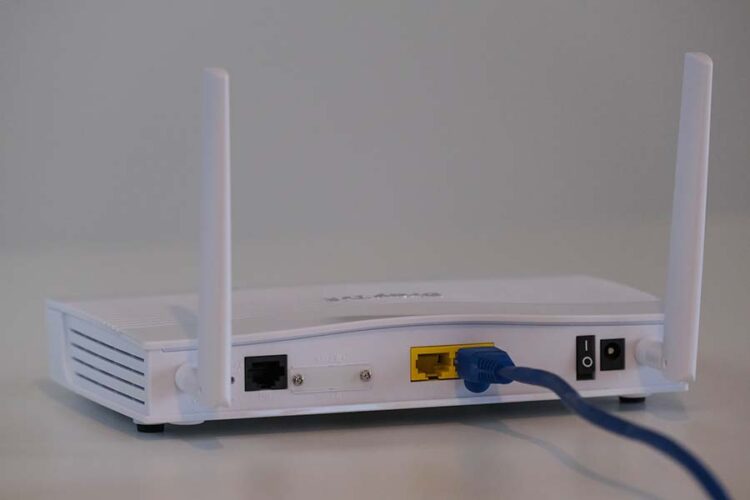When you connect your Roku device to a Wi-Fi network, the Internet will open up. But if you have a slower Wi-Fi connection, or in some cases, no Wi-Fi at all, it can be difficult to get things going. That’s where your home network comes in. Basically, this is how your home network and the Internet work together: your home network connects your devices to the Internet so that you can use websites like Google Play and Netflix and access other services. Your router — or what you might think of as an Internet gateway — also plays a key role by connecting all of these devices to the Internet. Thus, when you connect your Roku device to a Wi-Security and share an Ethernet port with another wired device like another computer or gaming console, it’s possible that both things won’t work well together or at all.
Why Won’t My Roku Connect To The Internet?
1. Your Internet speed may be too slow:
A connection speed of at least 5 Mbps is required for streaming content, and slower speeds could cause your device not to connect.
2. Your router or modem may be faulty:
If the hardware hosting your Wi-Fi signal malfunctions, it can prevent you from connecting to the internet. Try resetting the router or modem.
3. Your device is too far away from the router:
You may need to move closer to your router in order for the device to get a strong enough signal and connect successfully.
4. Incorrect Wi-Fi password:
Double-check that you’re entering the correct Wi-Fi password; even a single typo could prevent your device from connecting.
5. Interference from other devices:
Ensure that no other devices are using the same channel as your router, as this can cause interference that prevents a connection.
6. Incorrect IP address settings:
If your device’s IP address is set to static, it may be preventing you from connecting to the internet. Try changing this setting to automatic.
7. Your Wi-Fi network is not broadcasting:
In some cases, your router may be set up not to broadcast its SSID (network name). To resolve this issue, you will need to turn on the option for your router’s SSID to be visible.
8. Your device is not compatible with the router:
Some older routers may not be able to connect to certain devices. Consult your router’s user manual for more information.
9. You are using an outdated version of Roku software:
If you are using an out-of-date version of the Roku software, it might prevent you from connecting to the internet.
10. Your network has a firewall enabled:
Some routers or modems have firewalls that can prevent certain devices from connecting to the web. Check your device’s settings and ensure that it is set up to allow access.
What Should You Do Before Connecting Your Roku?
1. Choose Your TV:
Before connecting your Roku, ensure you have a compatible television. Check the specifications of the device to ensure it has an HDMI port and is High Definition (HD). Otherwise, you won’t be able to connect your streaming device.
2. Select A Power Source:
You’ll need access to an electrical outlet or USB port to power your Roku. Make sure you have a compatible cable and adapter ready to connect the device.
3. Choose A Network:
You’ll need an internet connection in order to watch content on your streaming device. Take a look at your available networks and choose one that is reliable and fast enough for streaming purposes.
4. Locate Your HDMI Port:
Once you’ve selected a compatible TV, locate the HDMI port that will connect your Roku to the television. Make sure it’s easily accessible so you can plug in the device without issue.
5. Get Ready To Connect:
Gather all of the necessary components for connecting your Roku, such as the power cable and adapter, HDMI cord, and remote control. Make sure everything is in one place before attempting to connect the device.
6. Connect The Device:
Plug the power cable into your Roku and the appropriate adapter. Then, connect the other end of the HDMI cable to your television. Finally, turn on your TV and select the correct input so you can begin streaming content on your device.
7. Set Up Your Remote Control:
Once you’ve connected your Roku, you can sync your remote control with the device. This will ensure that you have the best possible experience when using your Roku.
8. Create A Roku Account:
You’ll need to create a Roku account to get the most out of your streaming device. This allows you access to extra features and gives you access to more content.
9. Begin Streaming:
After everything is set up, you can begin streaming content on your Roku. Take some time to explore the different features of the device and enjoy accessing all of your favorite shows and movies!
10. Troubleshoot Issues:
If you experience any issues with your device, you can use the Help Center to troubleshoot common problems. This section of the website provides useful information that can help resolve any issues quickly and easily.
How To Troubleshoot Your Roku Connection To The Internet?
1. Check the cable connections.
The first step is to ensure all your cables are connected properly and securely. If you have an Ethernet cable, check both ends to make sure they’re plugged into the correct ports. Make sure your HDMI cable is snugly connected at both ends, too.
2. Check the status light on your Roku device.
The status light should be illuminated if your device is powered on and connected to the router. If it’s not lit up, try unplugging the power cable from your Roku device and plugging it back in again.
3. Check the internet connection on other devices.
If you are still having trouble connecting to the internet on your Roku, it may be a problem with the router or modem. Try connecting to the internet with another device, such as a laptop or smartphone. If you can connect to the internet on these other devices, then it’s likely that there is an issue with your Roku device.
4. Reset your router and modem.
If your internet connection works on other devices but not on your Roku, try resetting the router and modem. Unplug all cables from the router or modem, wait 30 seconds, and then plug them back in again. Once it’s finished restarting, check to see if you can connect to the internet on your Roku.
5. Contact customer support.
If none of these steps work and you’re still having trouble connecting to the internet on your Roku, it may be a more complex issue that requires customer support. Visit the Roku website or contact their customer service team for further assistance. They should be able to identify and troubleshoot any issues you are having.
6. Update your Roku software.
Outdated software can sometimes be the cause of connection issues, so check to see if there are any available updates for your device. If you need help updating the software, refer to the user manual or contact customer support for assistance.
7. Reset your Roku device.
If all else fails, you can try resetting your Roku device. Resetting the device will bring it back to its factory settings and allow you to start over. Refer to the user manual for instructions on how to do this, or if you need help, contact customer support.
8. Check for Wi-Fi signal strength.
If you’re trying to connect your Roku device to a wireless network, make sure the signal strength is strong enough. Move closer to the router or try repositioning it if possible. You can also check what other networks are in range and see if they provide a stronger connection.
Conclusion
With all these issues, you might wonder if buying a Roku is worth it. While there are some issues with Rokus, most can be resolved by following the steps above. If you have a slower Internet connection or no Internet, connecting your Roku device to a home network is the best solution.







